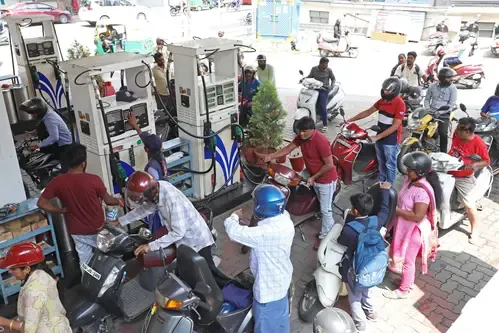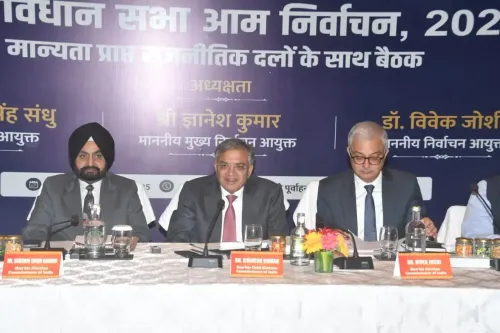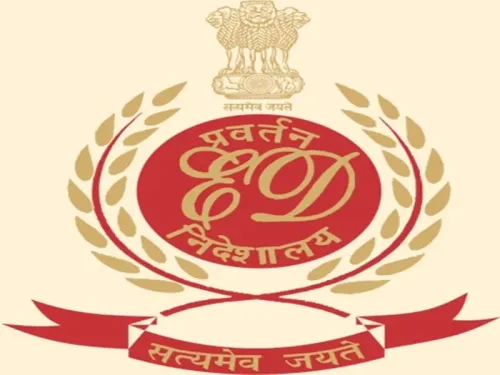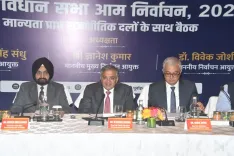Is 20% Ethanol Blending in Petrol Really Harmful?

Synopsis
Key Takeaways
- The government denies harmful effects of E20 blending.
- Studies show no significant performance issues for vehicles.
- E20 blending aids in energy security and rural economic growth.
- Minor drops in fuel efficiency can be mitigated with proper tuning.
- Low-cost part replacements ensure vehicle compatibility.
New Delhi, Aug 5 (NationPress) The government has dismissed media claims concerning the supposed adverse effects of blending 20 percent ethanol (E20) with petrol, especially in relation to older vehicles and consumer experience. “These concerns are primarily unfounded and lack scientific backing,” stated the Petroleum Ministry in an official declaration, emphasizing that the notion of ethanol blending damaging vehicles or creating undue challenges for consumers is “not grounded in reality and lacks a technical basis.”
Research from international studies on the impact of Ethanol-Petrol Blends on the mechanical, energy, and environmental performance of vehicles—analyzed through testing both carbureted and fuel-injected vehicles at intervals of 10,000 km during the initial 100,000 km—revealed no statistically significant differences in terms of power, torque, or fuel consumption.
“Compatibility and drivability assessments conducted by the Automotive Research Association of India (ARAI), the Indian Institute of Petroleum (IIP), and Indian Oil Corporation (R&D) have verified that older vehicles exhibit no significant performance issues or unusual wear-and-tear when using E20 fuel. Furthermore, E20 has successfully passed both hot and cold start tests without causing engine damage,” the ministry noted in a post on X.
Regarding fuel efficiency, the ministry indicated that ethanol, having lower energy density than petrol, results in a slight decrease in mileage—approximately 1–2 percent for vehicles designed for E10 and calibrated for E20, and around 3–6 percent for others.
“This slight reduction in efficiency can be mitigated further through enhanced engine tuning and the utilization of E20-compatible materials, which leading car manufacturers have already implemented. The Society of Indian Automobile Manufacturers (SIAM) confirmed that E20-compliant vehicles with improved components have been introduced since April 2023. Therefore, the assertion that E20 results in a significant drop in fuel efficiency is factually incorrect,” the ministry highlighted.
Established safety standards for E20, including corrosion inhibitors and compatible fuel system components, have been defined through BIS specifications and Automotive Industry Standards. The replacement of certain rubber parts or gaskets may be recommended for some older vehicles after prolonged usage of around 20,000 to 30,000 km.
This replacement is low-cost and can be easily done during regular vehicle servicing, the ministry added.
Notably, ethanol possesses a higher octane number compared to petrol (108.5 vs. 84.4), which indicates that ethanol-petrol blends provide a higher octane rating than conventional petrol.
Thus, the use of ethanol serves as a partial alternative for supplying high-octane fuels (95), essential for modern high compression ratio engines, enhancing ride quality, the ministry concluded.
“E20 blending significantly fortifies India’s energy security by reducing reliance on crude oil imports. Since 2014-15, India has saved over Rs. 1.40 lakh crore in foreign exchange through petrol substitution. Additionally, ethanol blending bolsters the rural economy, with prompt payments exceeding Rs. 1.20 lakh crore to farmers, thereby generating income and job opportunities in the agricultural and biofuel sectors,” the ministry further stated.









